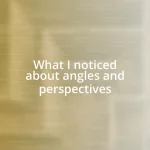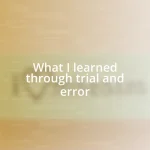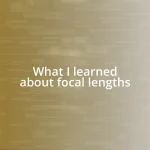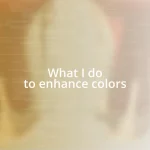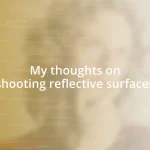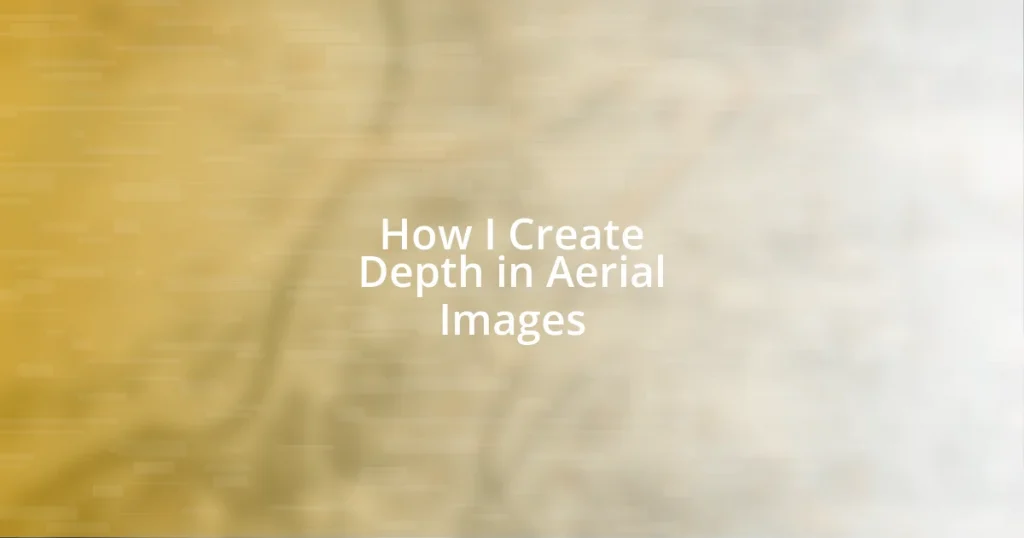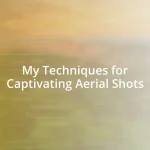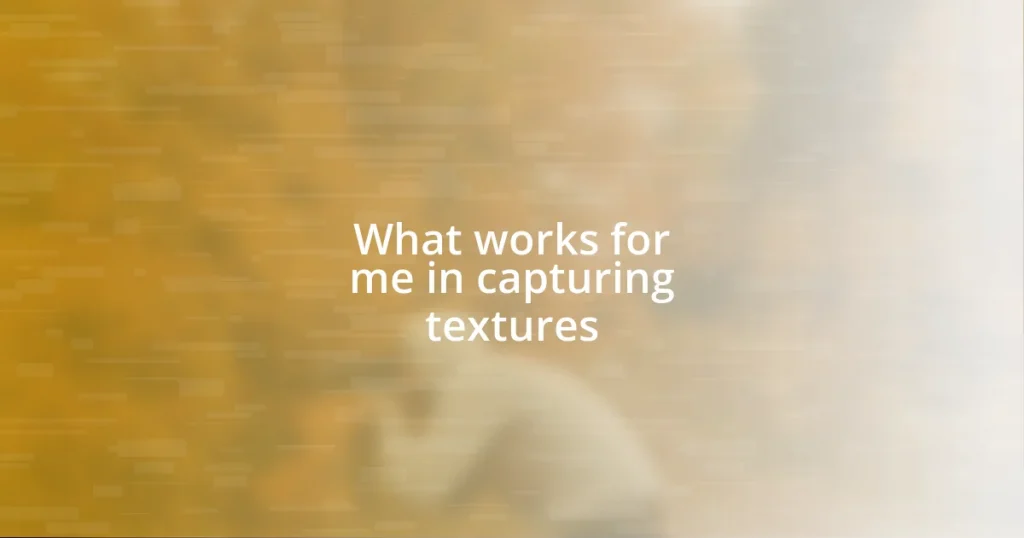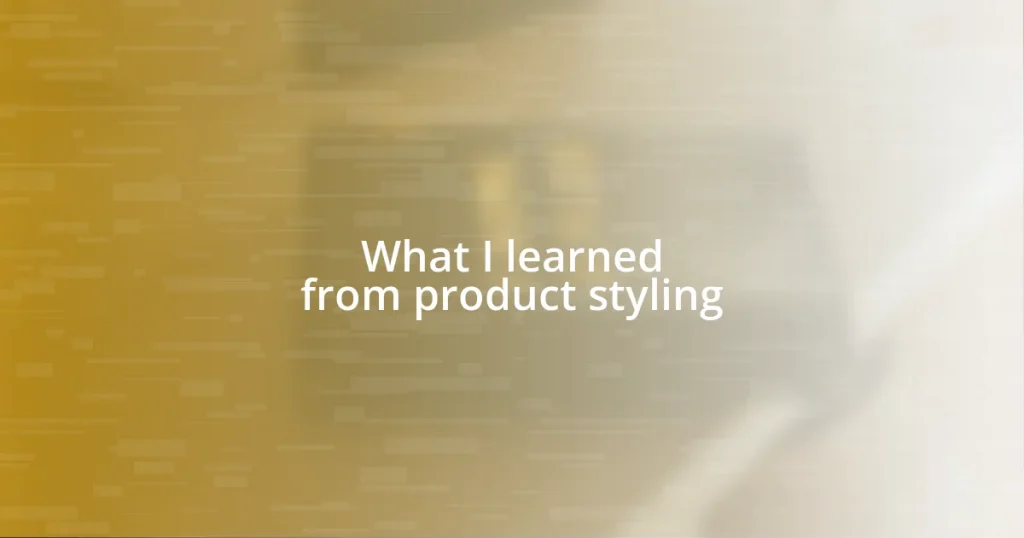Key takeaways:
- Effective composition techniques, such as the rule of thirds and leading lines, are essential for creating depth and engaging images in aerial photography.
- Choosing the right aerial equipment, particularly focusing on camera quality, stability, and ease of use, significantly enhances image quality and depth perception.
- Post-processing techniques, including using gradients, selective sharpening, and color adjustments, play a crucial role in enhancing depth and emotional impact in aerial images.
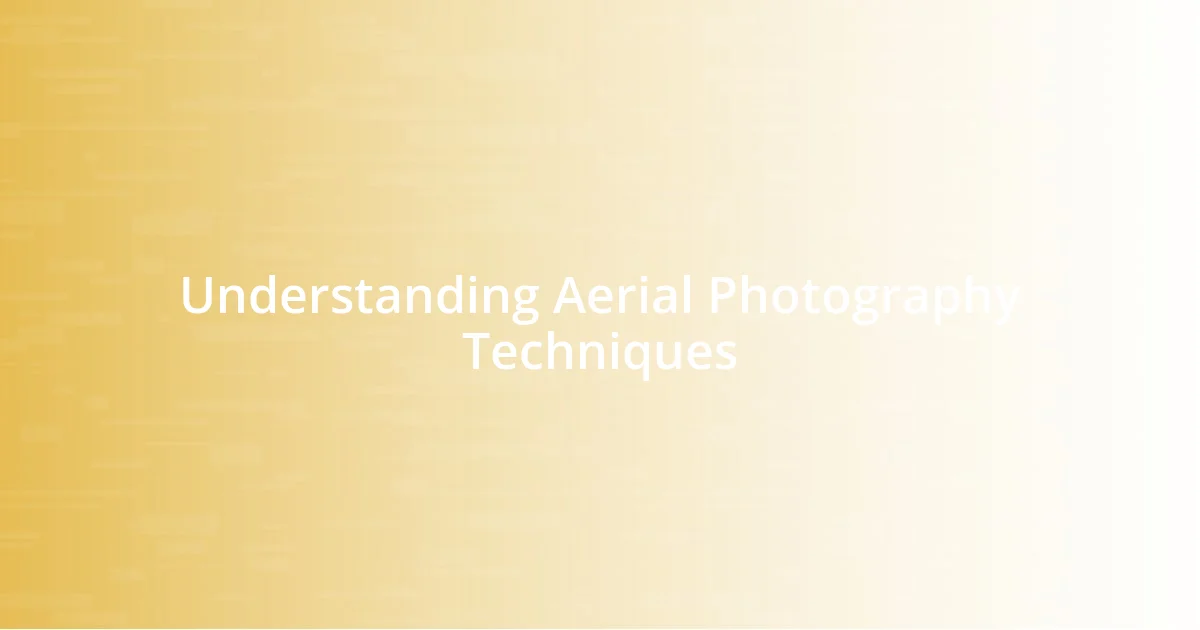
Understanding Aerial Photography Techniques
When I first ventured into aerial photography, I was amazed by how important composition techniques are in creating depth. For instance, the rule of thirds, which suggests dividing the frame into three equal sections both vertically and horizontally, helps guide the viewer’s eye through the image. Have you ever noticed how balanced images draw you in? That’s the magic of thoughtful composition.
Understanding the interplay of light and shadow is another key technique. Sunrises and sunsets can transform a mundane scene into something breathtaking. I remember capturing an old barn bathed in golden light just before dusk; the shadows added layers to the image, creating a sense of three-dimensionality. It was as if the land was telling its own story.
Finally, let’s talk about perspective. Experimenting with varying altitudes can drastically alter the depth perception in your images. When I flew lower during one shoot, the foreground elements popped, almost inviting the viewer to step into the scene. It’s thrilling to discover how each slight adjustment in height or angle can change the narrative of your photograph. How often do you find yourself re-evaluating your perspective? It’s a pivotal part of developing your aerial style.

Choosing the Right Aerial Equipment
Choosing the right aerial equipment can be a game changer in your aerial photography journey. The right gear not only enhances image quality but also helps capture depth more effectively. I remember investing in a drone with a high-quality camera, and that turned out to be a pivotal moment. The crisp details it captured in landscapes made every shot feel like an artwork in progress.
When selecting aerial equipment, consider the following:
- Camera Quality: Look for a camera with a large sensor and high resolution. This allows for greater detail and dynamic range.
- Stability Features: A drone with good gimbal stabilization is crucial for eliminating unwanted vibrations.
- Lens Options: Interchangeable lenses can offer versatility and creative angles that standard lenses may not.
- Battery Life: Longer flight times mean you can explore more without frequent interruptions.
- Ease of Use: If you’re starting, opt for user-friendly equipment, allowing you to focus on creativity rather than technical details.
These elements contribute significantly to creating depth and dimension in your aerial images.

Using Composition for Depth
When it comes to composition in aerial photography, leading lines can work wonders. I often look for natural pathways—like rivers or roads—that draw the viewer’s eye deeper into the image. In one of my favorite shots, a winding trail cut through a vibrant green valley, leading to a distant mountain range. It felt like an invitation to explore the scene, showcasing a journey within the frame itself.
Framing is another essential technique I cherish. Surrounding your subject with elements of the environment can create a more immersive experience. On a chilly autumn afternoon, I took a photo of a lone tree surrounded by a colorful patchwork of leaves. The branches from nearby trees framed the image perfectly, adding depth and context. It was almost as if nature was providing a beautiful border, enhancing the focal point while grounding it in its surroundings.
Lastly, varying the layers in the foreground, middle ground, and background is crucial. I strive to create a three-dimensional feel by capturing elements at different distances from the camera. During a recent flight, I captured a stunning seaside view where rocky cliffs in the foreground contrasted beautifully with soft waves in the background. This layering created a tension and harmony that made the image captivating and engaging, inviting viewers to browse through the various levels of detail.
| Technique | Description |
|---|---|
| Leading Lines | Natural pathways guide the viewer’s eye deeper into the scene. |
| Framing | Using environmental elements to surround and highlight the subject. |
| Layering | Incorporating foreground, middle ground, and background for depth. |

Incorporating Foreground Elements
Incorporating foreground elements into aerial images is like adding a rich spice to a dish— it elevates the entire experience. I once captured a breathtaking shot of a vast lavender field, but it was the weathered wooden fence in the foreground that drew my eye and anchored the image. It’s amazing how a simple addition can create a sense of place and context, making viewers feel as if they are right there, breathing in the fragrant air.
Sometimes, I find that including people or animals can add a sense of scale and narrative. During a sunrise shoot at a coastal cliff, I spotted a solitary surfer paddling out. As I framed the shot, the surfer became not just a subject but a story—an adventurer ready to embrace the waves. This interplay of human presence against the stunning backdrop gave the image depth and a heartfelt connection, making it relatable to anyone who has chased their dreams.
Using textures in the foreground is another powerful technique I enjoy. I vividly remember photographing a field of wheat swaying in the breeze, with golden grains in the foreground leading to a dramatic sunset. The texture of the wheat added movement and richness to the image, while the warm colors blended seamlessly. This not only created depth but also evoked a sense of peace and nostalgia. Have you ever felt that tug of memory when you see familiar scenes? It’s those small details that can transport viewers into the moment you captured.

Adjusting Lighting and Shadows
Adjusting the lighting in my aerial images is a crucial step that significantly impacts the overall mood and depth. I often experiment with different times of day to capture the perfect light. For instance, while photographing a sprawling orchard at golden hour, the sun cast soft shadows and highlighted the vibrant colors of the trees. This warm, diffused light created a sense of warmth and depth, making the image feel inviting—almost as if you could step right into it.
Shadows play an equally important role in adding dimension. I remember one especially rewarding moment when I shot a series of rolling hills during a late afternoon. The long shadows created by the setting sun emphasized the textures of the landscape, making the hills appear almost three-dimensional. Have you ever noticed how shadows can transform an ordinary scene into something dramatic and engaging? I truly believe they offer an opportunity to play with contrast, guiding the viewer’s eye through the layers of the image.
In post-processing, I find that fine-tuning the balance between highlights and shadows is essential for achieving that immersive quality. A few adjustments can turn a flat image into a stunning visual narrative. I once edited a shot of a winding river, enhancing the highlights on the water while deepening the shadows on the surrounding trees. The result? A breathtaking contrast that draws your gaze along the river’s meandering path, creating an almost tangible sense of depth and intrigue that makes you want to explore further. How often do we overlook the potential of lighting and shadows in our photography? I think it’s essential to embrace these elements to elevate our work.

Post-Processing for Enhanced Depth
Post-processing is where the magic truly begins for me, especially when it comes to enhancing depth in aerial images. One of my favorite techniques involves using gradients to create atmospheric depth. I remember processing an aerial shot of a coastal landscape where I applied a subtle blue gradient to the distant horizon. This simple adjustment not only reinforced the sense of distance but also echoed the calmness of the ocean, almost inviting the viewer to dive into the serenity of that moment. Have you ever felt a painting come to life just because of color gradients? It’s striking how color can evoke feelings and perspective.
Another key element I rely on is the selective sharpening of details. When I edit a cloud-filled sky over a rugged mountain range, I often sharpen the clouds to make them pop against the softer mountain details below. This contrast creates a natural layering effect that enhances the sense of depth. There was a time when I overlooked this step, simply because I thought all elements should be sharp. But that revelation changed my approach entirely; softening parts of the image can actually guide the viewer’s eye where I want it to go. Isn’t it fascinating how visibility can create an emotional response in an image?
Lastly, I make it a habit to play with depth through color correction and vibrancy adjustments. For instance, during one drone session over a vibrant cityscape, I adjusted the saturation of the buildings while muting the colors of the sky. This created a dramatic focus on the architecture, immersing viewers in the bustling energy of the city. I often ponder if color can reflect a certain mood, much like music does. In that moment of editing, the vibrance felt electric, making the city almost palpable. What I’ve learned is that, through post-processing, we can breathe life into our images—transforming layers into stories waiting to be explored.



